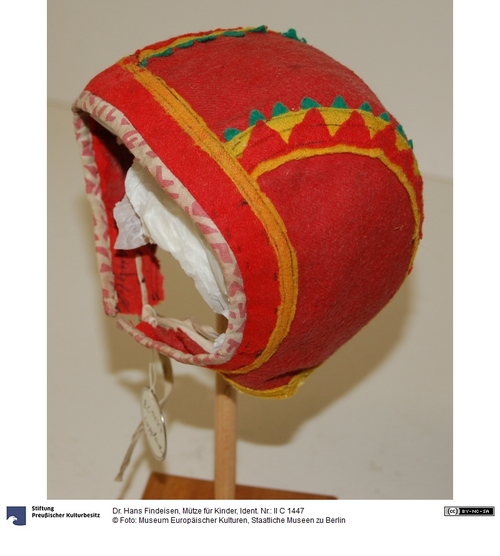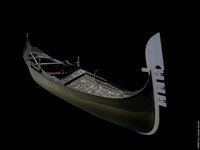Laut Sammler eine "Knabenmütze".
Rot ist normalerweise eine Farbe, die dem weiblichen Geschlecht zugeschrieben wird, daher kann die Mütze auch für Mädchen sein.
Es gibt jedoch in manchen Gegenden die Sitte, rote Mützen auch Jungen aufzusetzen.
Erwerbungsort: südliches finnisches Sápmi
Angaben zur Herkunft:
Dr. Hans Findeisen (1903 - 1968), Sammler
um 1900
Samen (Sámi, "Lappen") (Ethnie)
Sápmi (Nordeuropa) (Region)
Erwerbungsort: südliches finnisches Sápmi (Region)
Gebrauchsort: Utsjoki (Finnland) bis Karasjok, sowie Kautokeino (Norwegen) (Region)
en

